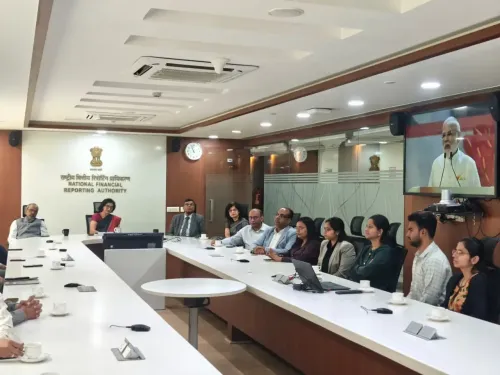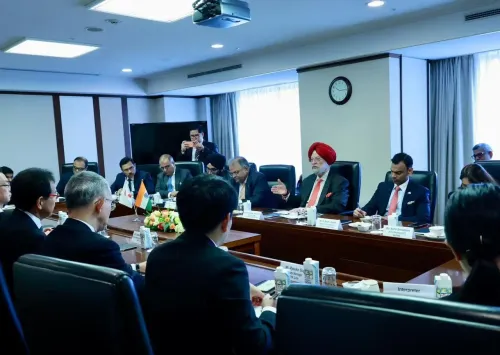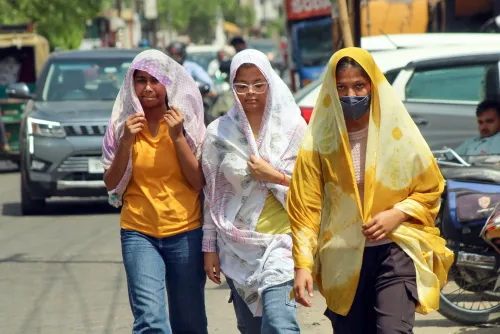Why Did RBI Hold Repo Rate Steady at 5.5%?

Synopsis
Key Takeaways
- The repo rate remains at 5.5%.
- The RBI maintains a neutral stance.
- Inflation has stabilized, but food price volatility persists.
- Strengthened policies are expected to boost economic growth.
- Commercial banks' response to rate cuts is crucial.
Mumbai, Aug 6 (NationPress) RBI Governor Sanjay Malhotra revealed on Wednesday that the monetary policy committee has opted to maintain the repo rate at 5.5 percent, while continuing with a neutral monetary policy approach.
This unanimous decision by the MPC follows a thorough evaluation of the macroeconomic landscape and the dynamic between growth and inflation.
A neutral stance is designed to neither stimulate nor restrict liquidity, effectively balancing inflation control without impeding economic growth.
The RBI Governor noted that while inflation has decreased significantly, there remains some instability in food prices, particularly in vegetables. Nonetheless, core inflation has stabilized around 4 percent.
He further mentioned that favorable monsoon conditions and the approaching festive season are anticipated to boost economic activity.
The RBI Governor expressed optimism that the Indian economy is set for strong growth in the medium term, despite global trade uncertainties, supported by the policies of both the Government and the RBI.
He emphasized that the promising outlook for the Indian economy stands in contrast to sluggish growth and rising inflation in the global context.
In its previous monetary policy meeting held on June 6, the RBI had announced a reduction of 50 basis points in the repo rate, bringing it down from 6 percent to 5.5 percent, alongside a 100 basis point cut in the Cash Reserve Ratio to boost growth.
The Governor pointed out that the repo rate has been cut by 100 basis points in rapid succession since February this year, and the effects on the economy are still unfolding.
A lower policy rate and increased liquidity in banks contribute to a reduction in bank loan interest rates, facilitating easier borrowing for both consumers and businesses, which in turn stimulates consumption and investment in the economy, fostering higher growth.
However, the success of the rate cuts depends largely on how swiftly and effectively commercial banks extend these benefits to borrowers.
Malhotra reiterated that the RBI is committed to keeping the inflation rate under control while also supporting growth through an accelerated easing of the monetary policy cycle.









